Albumen Object View
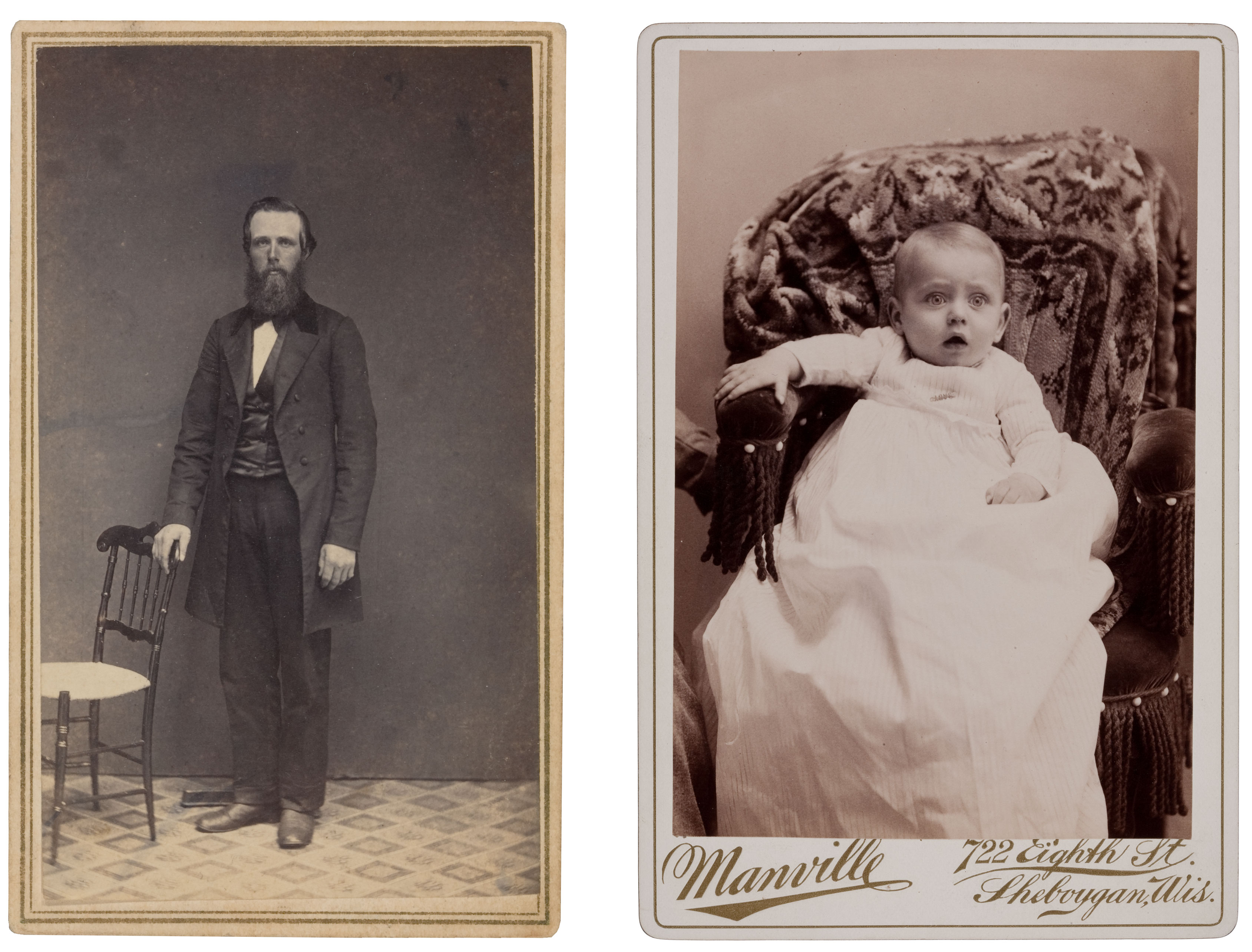
Albumen prints are nearly always mounted to a secondary support.
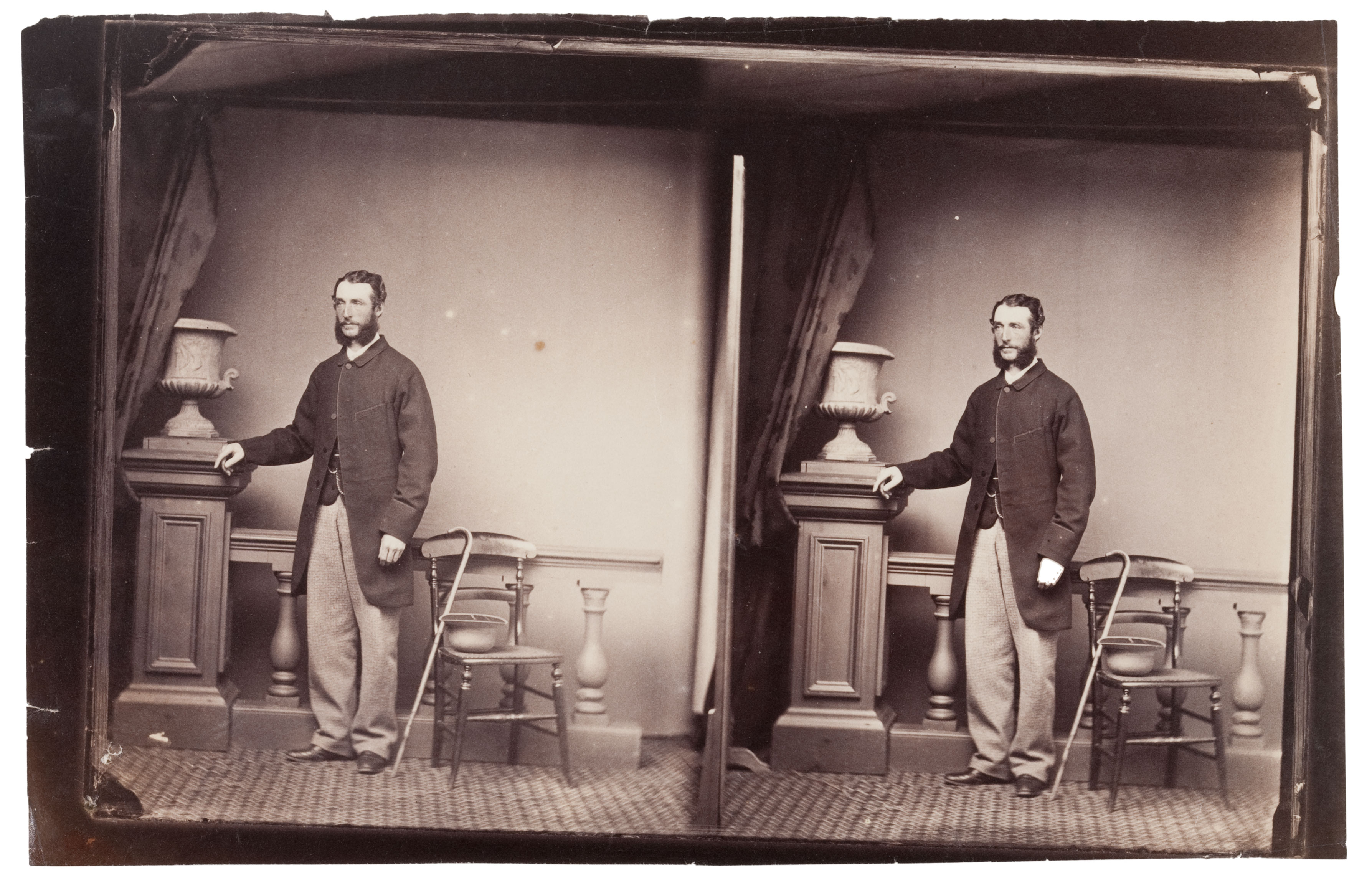
Unmounted albumen print.
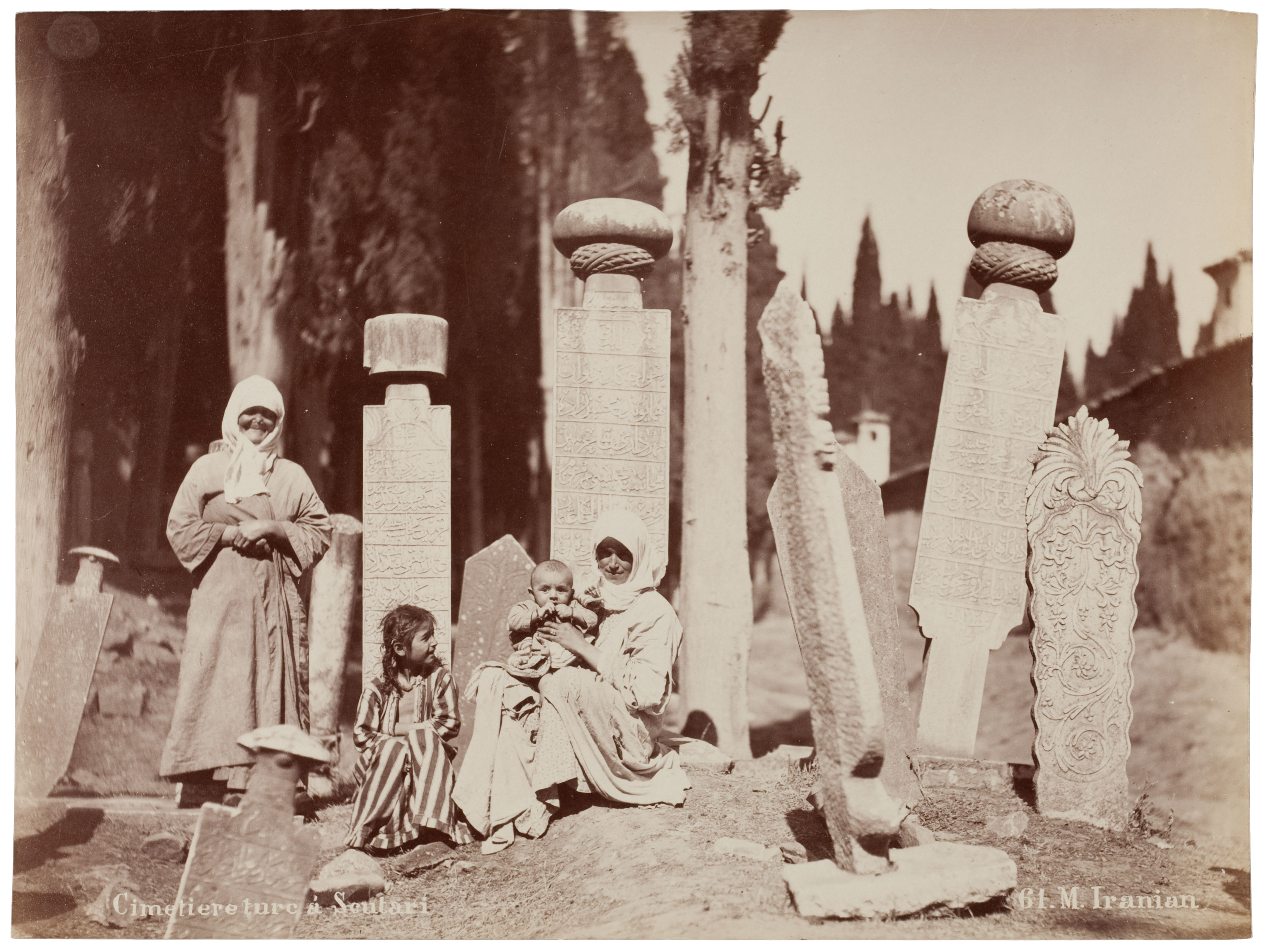
Unmounted albumen print.
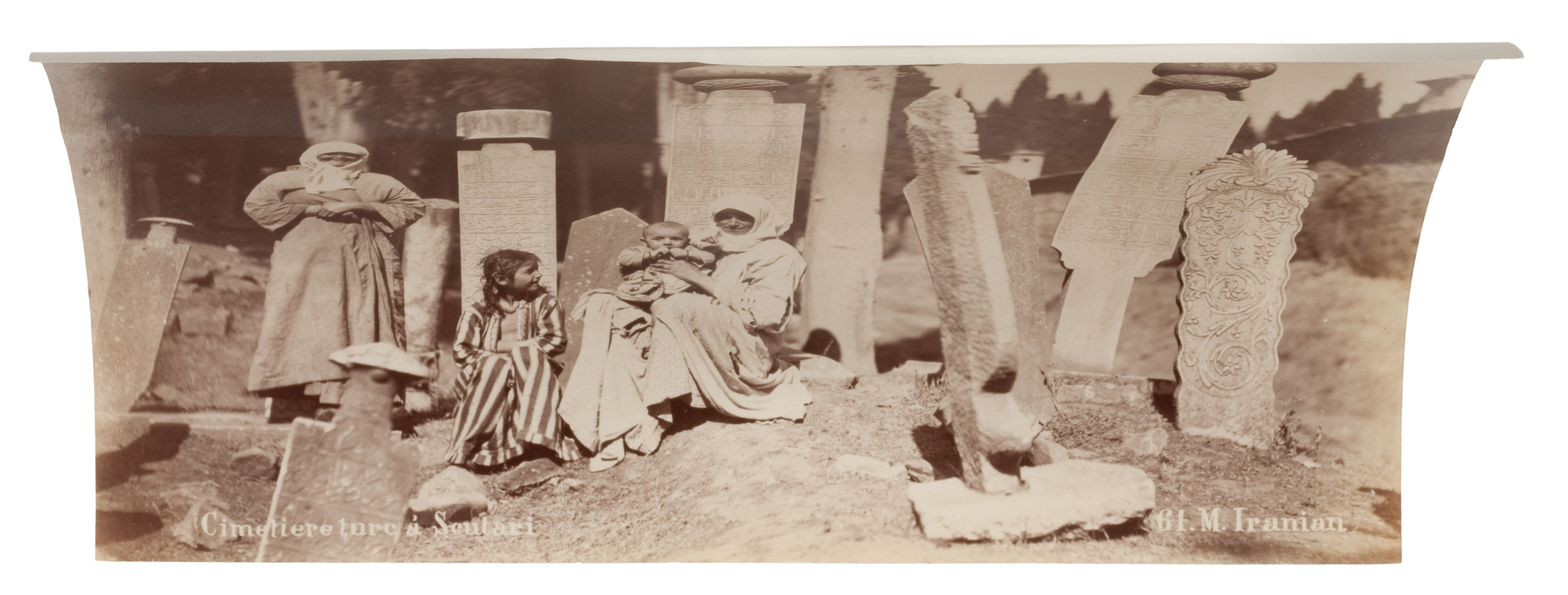
Albumen prints were made using thin paper.
Warm image tones are an identifying feature of albumen prints. Albumen prints are usually gold toned with a gold chloride solution, which partially converts the silver image to gold and alters the shape of the image particles resulting in a change in image color. Gold toning yields a range of tones. The final print color is dependent on the print exposure, toner formula and length of time in the toning bath. Common deterioration such as highlight yellowing, silver sulfiding and silver oxidation (see Deterioration Characteristics below) will alter the image tone. Tinting was introduced after 1863 to overcome the inherent highlight yellowing of albumen prints. Pink, blue or violet dyes were added to the albumen prior to coating. The dyes used were some of the first synthetic dyes manufactured; they are extremely light sensitive and often faded, resulting in a “dirty” look or fading completely away. Tinting was popular in the 1870s and 1880s with pink being the most popular color. The practice declined in the 1890s due to the instability of the dyes.
Highlight yellowing is a key identifying feature of albumen prints. Highlights yellow for a variety of reasons inherent to the process and are inevitable for all albumen prints. During sensitization of the albumen paper, light sensitive silver halides form as well as silver-albumenate complexes. During fixing, unexposed silver halides are dissolved, but the strongly bonded silver albumenate remains, which is very susceptible to sulfiding (silver sulfide is yellow). Another cause of yellowing is the Maillard or “sugar protein” reaction, which is a complex reaction between naturally occurring glucose in egg white and amino groups on the egg proteins. This is more prevalent with prints made with fresh albumen (1850-1880) than with fermented albumen because much of the glucose is naturally removed from the albumen during fermentation. Yellowing can also occur due to photochemical deterioration caused by prolonged exposure to light.
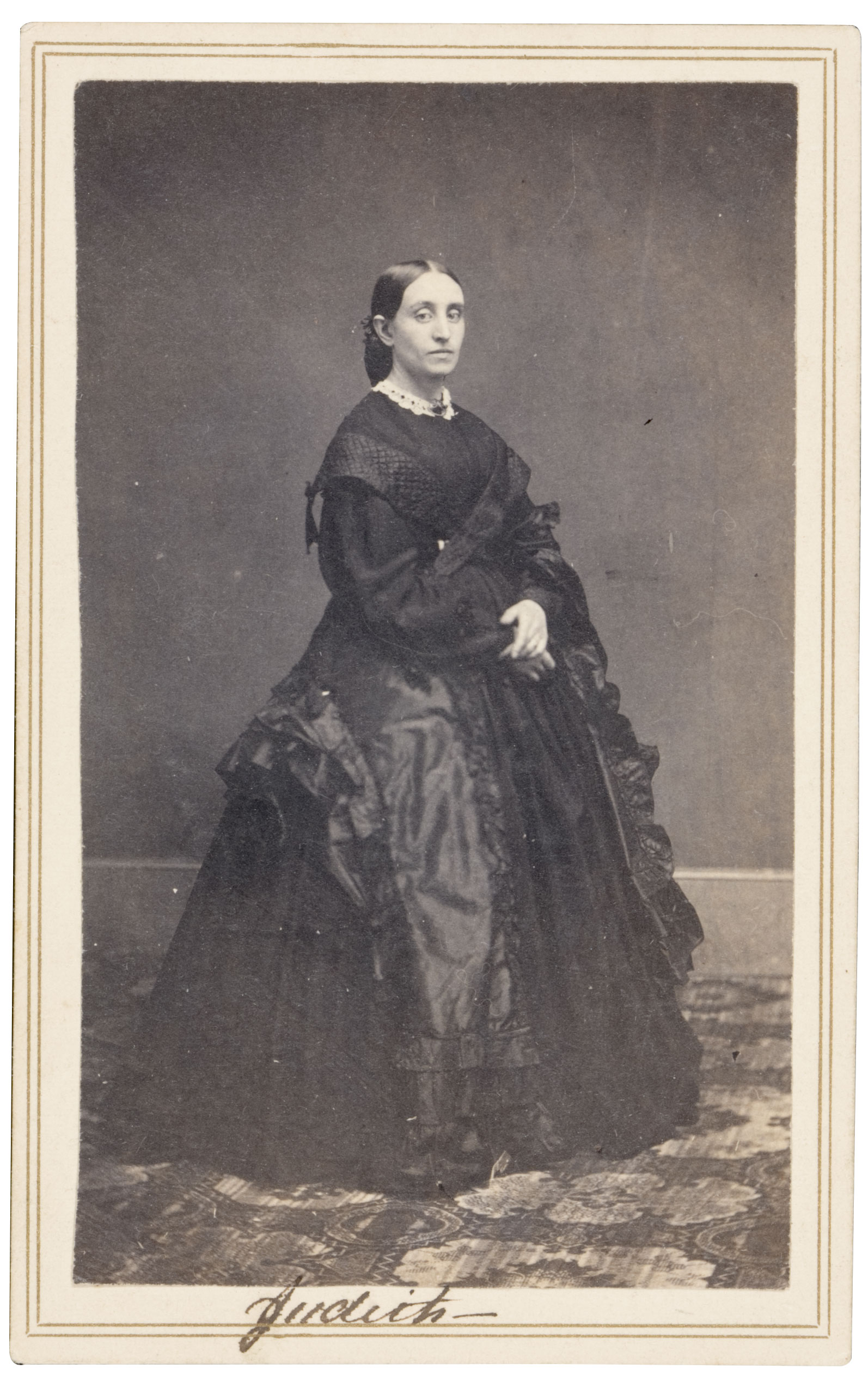
This image exhibits a purple-black image tone. Albumen prints are typified by yellow highlights and a warm image tone.
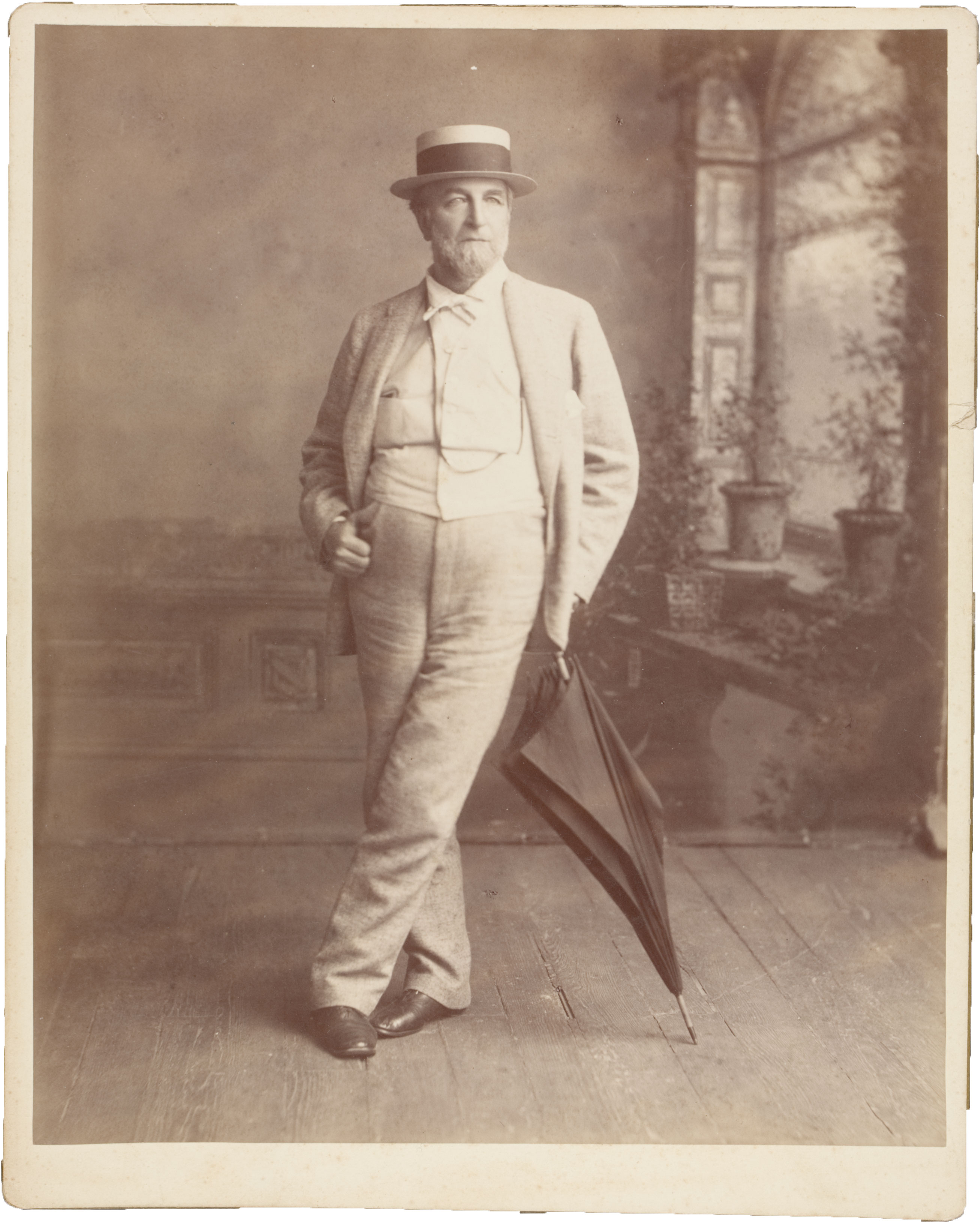
This image exhibits a brownish image tone. Albumen prints are typified by yellow highlights and a warm image tone.
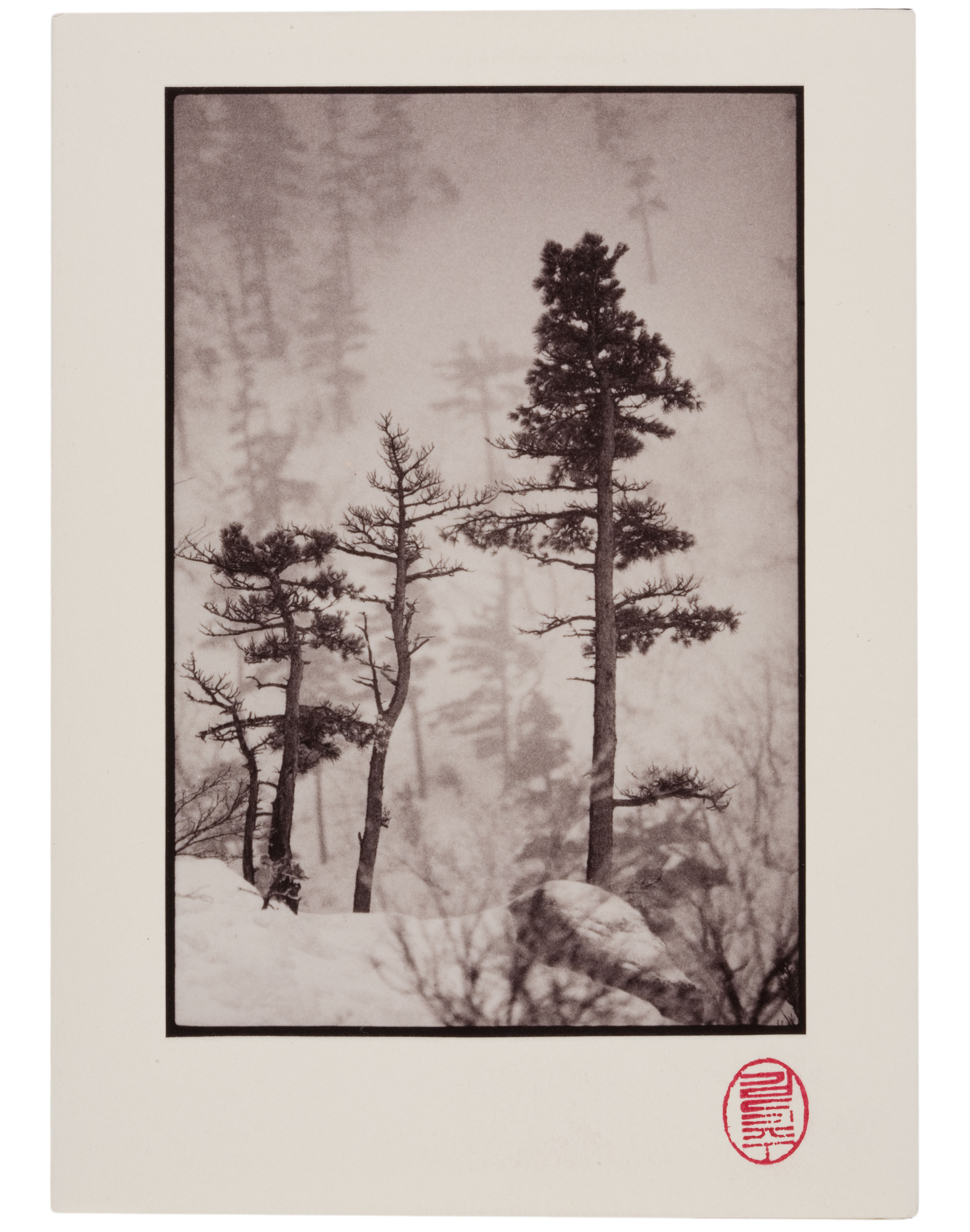
This contemporary albumen print exhibits a purple-red image tone and no deterioration. Albumen prints are typified by yellow highlights and a warm image tone.
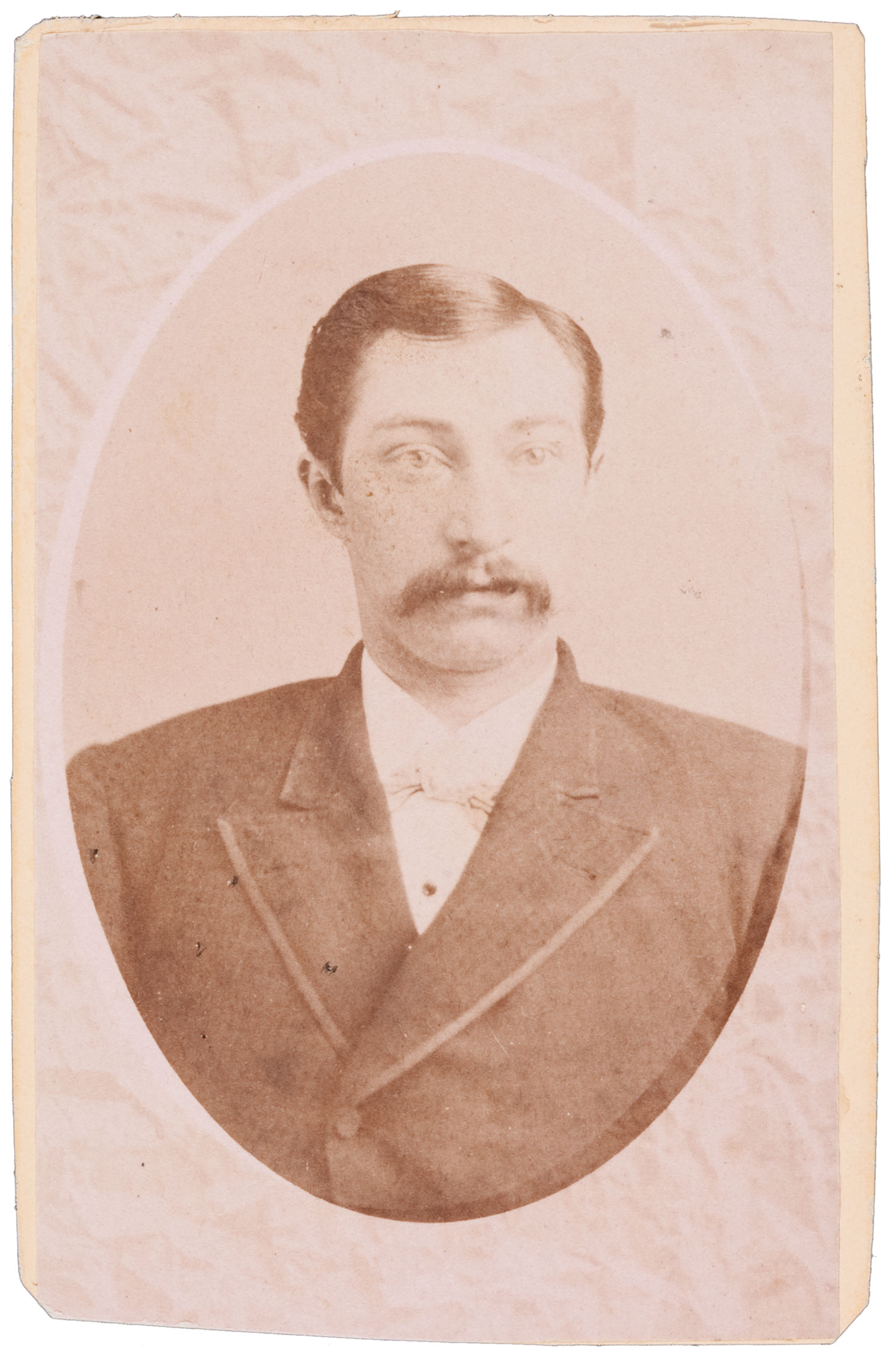
This image exhibits a prominent pink cast. Often such dyes, added to the albumen prior to coating, tended to drastically fade.
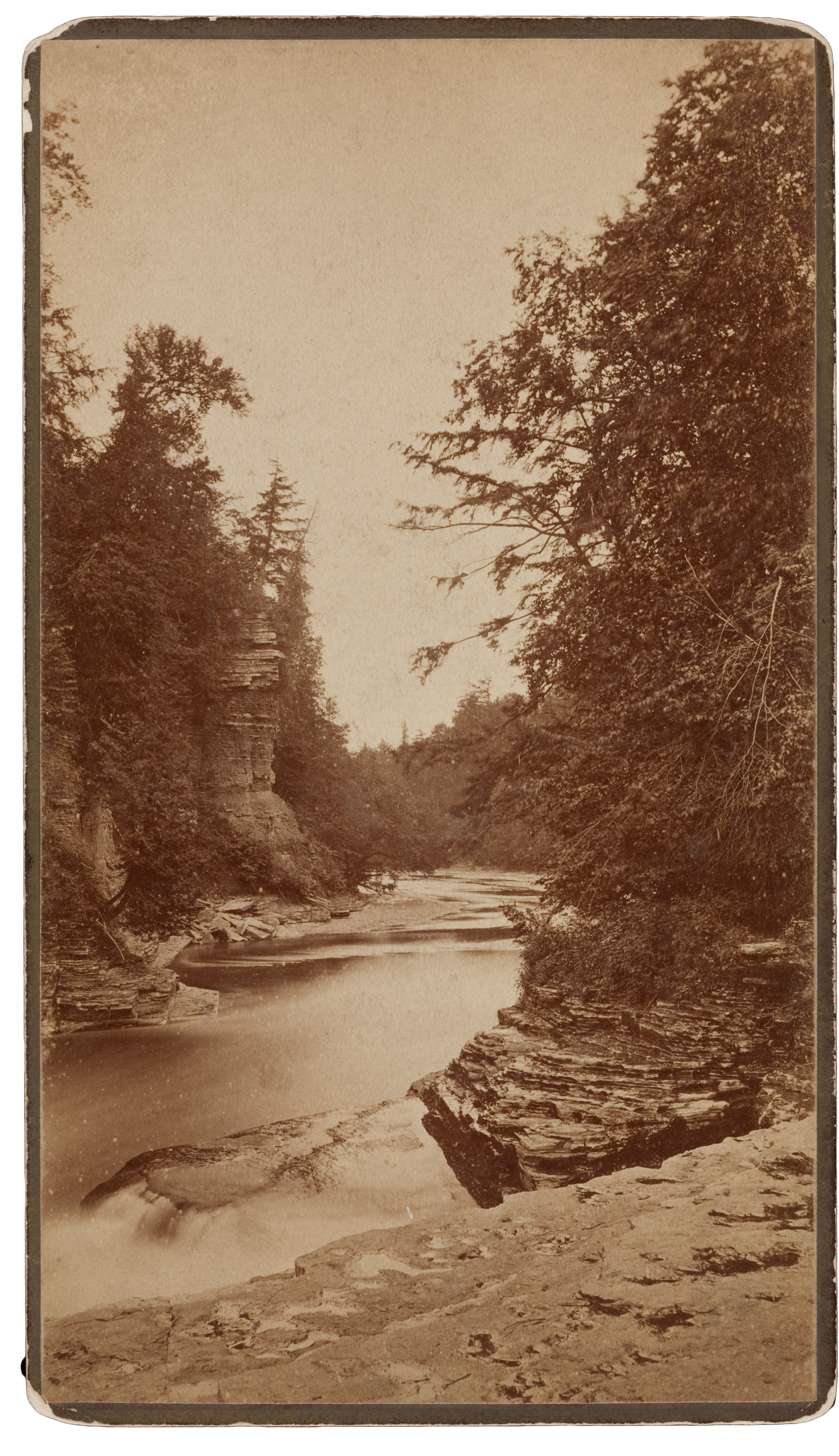
Sulfiding: Overall yellow-brown tone caused by silver sulfide.
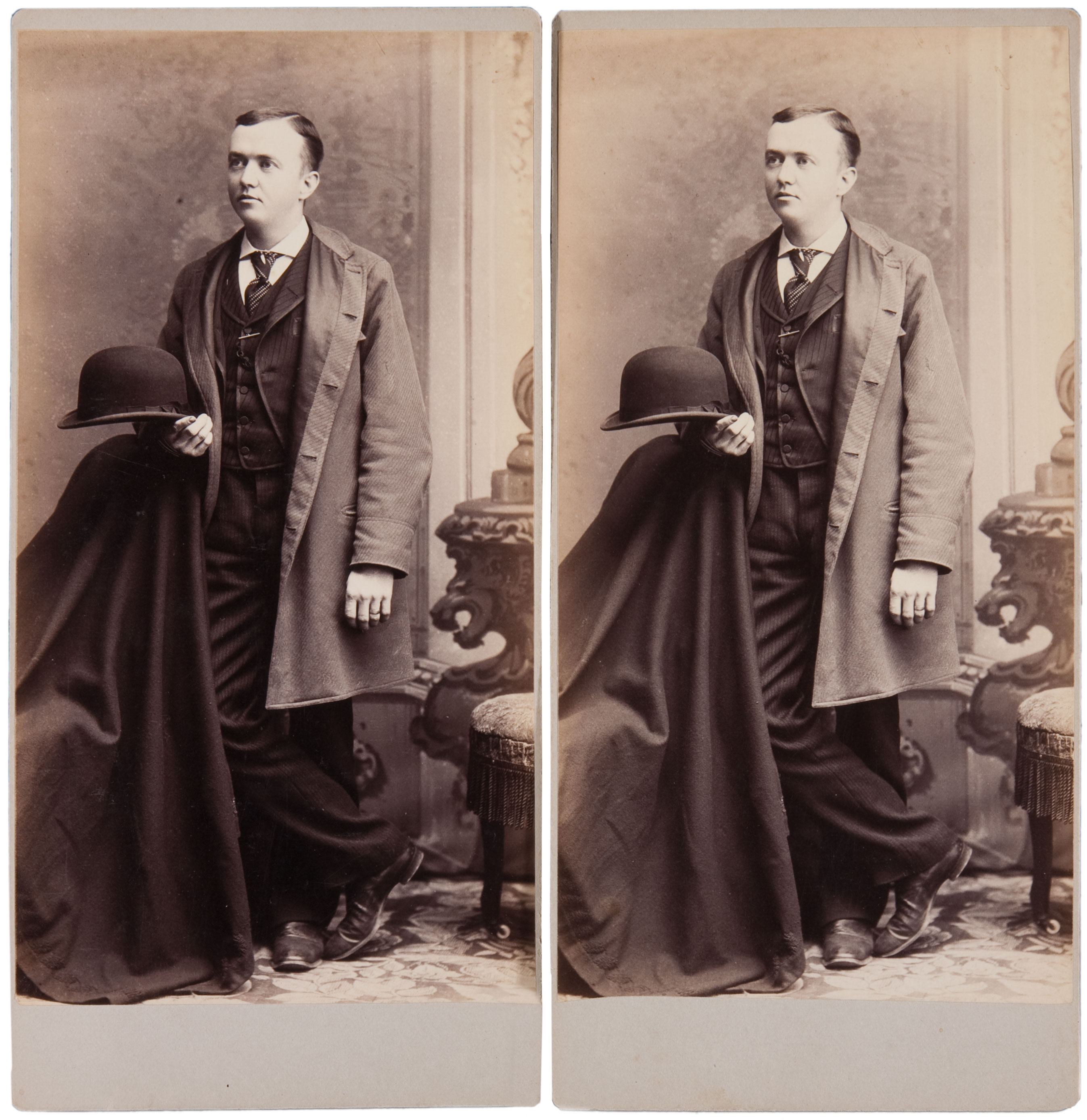
Oxidation: Silver oxidizes first in the highlights making them appear blown-out.
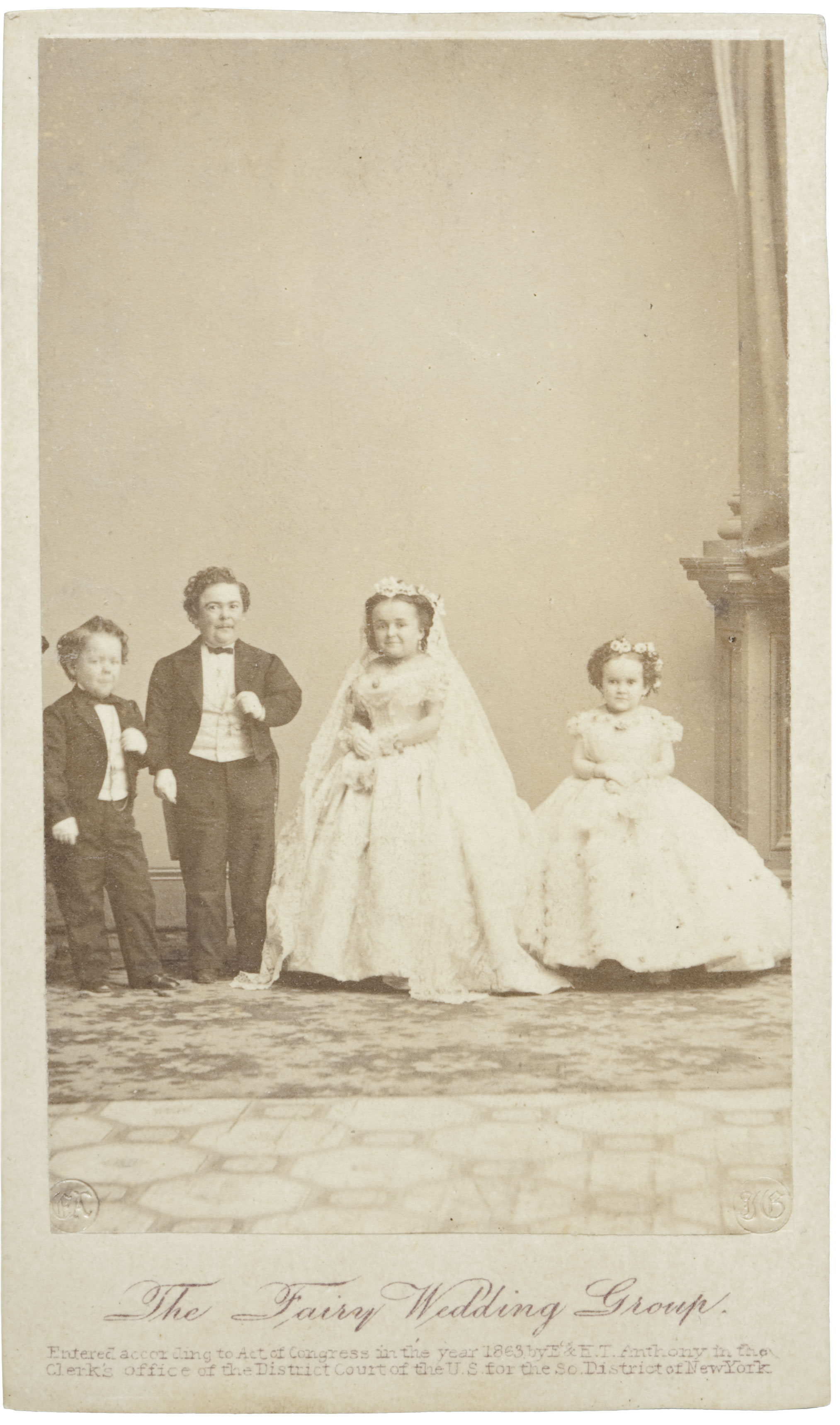
Oxidation: Overall oxidation gives the image a yellow-brown tone. Also notice the highlight yellowing.
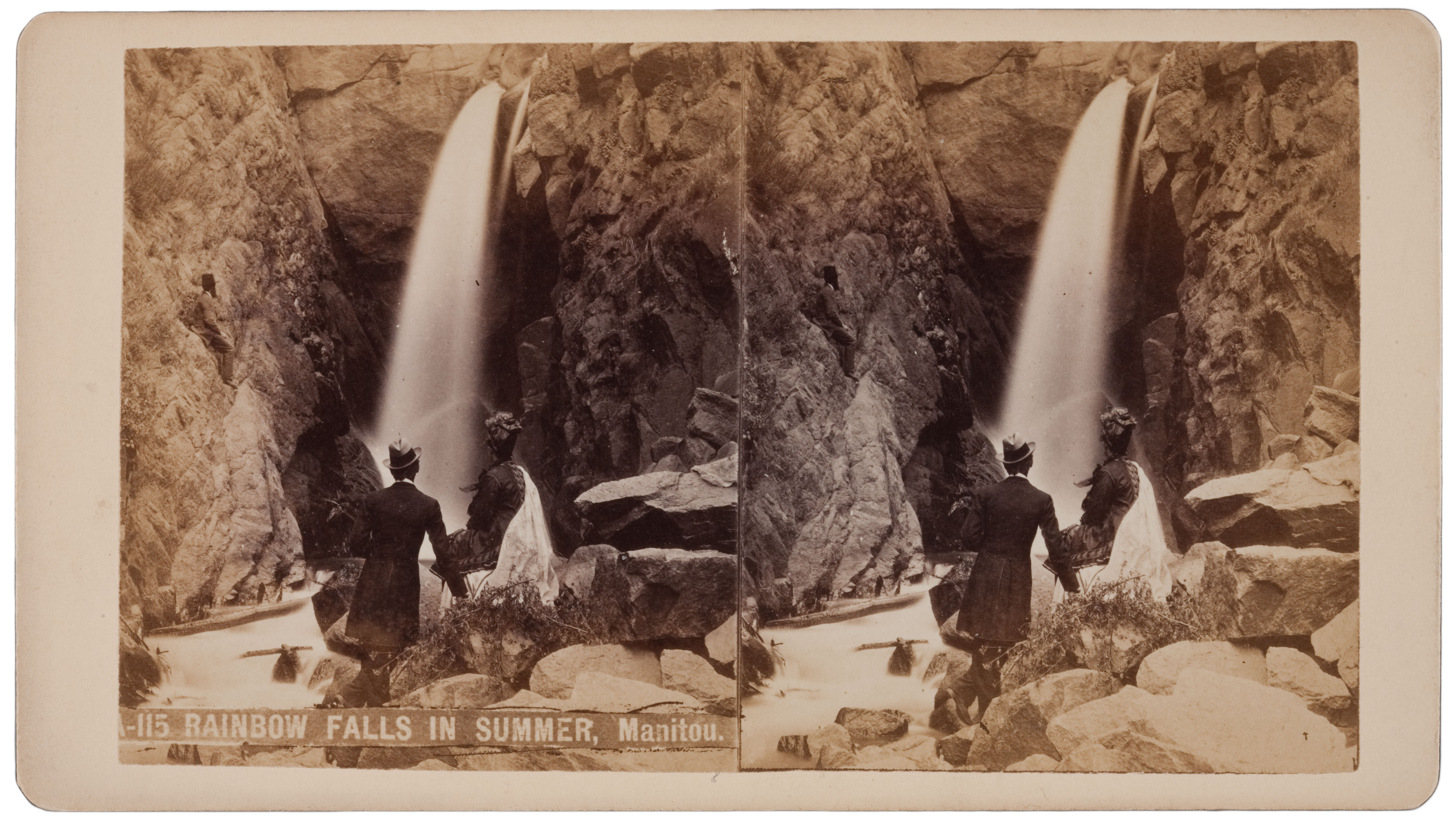
Oxidation: In books and albums, oxidation occurs from the outside-in as air attacks the silver at the outer edges first. Oxidation can be seen on this mounted print.
Albumen prints are usually mounted to a secondary support or into books and albums. They are made on very thin paper stock and tend to curl severely due to the difference in absorption and desorption of moisture between the paper and the albumen binder, making mounting a necessity. Card mounts are usually made of good quality paper on the front and back with a poor quality paper core, which tends to acidify over time. With the popularity of the albumen print, several standardized formats evolved, such as carte-de-visite, cabinet card, and stereoview card, as well as other larger un-standardized formats.
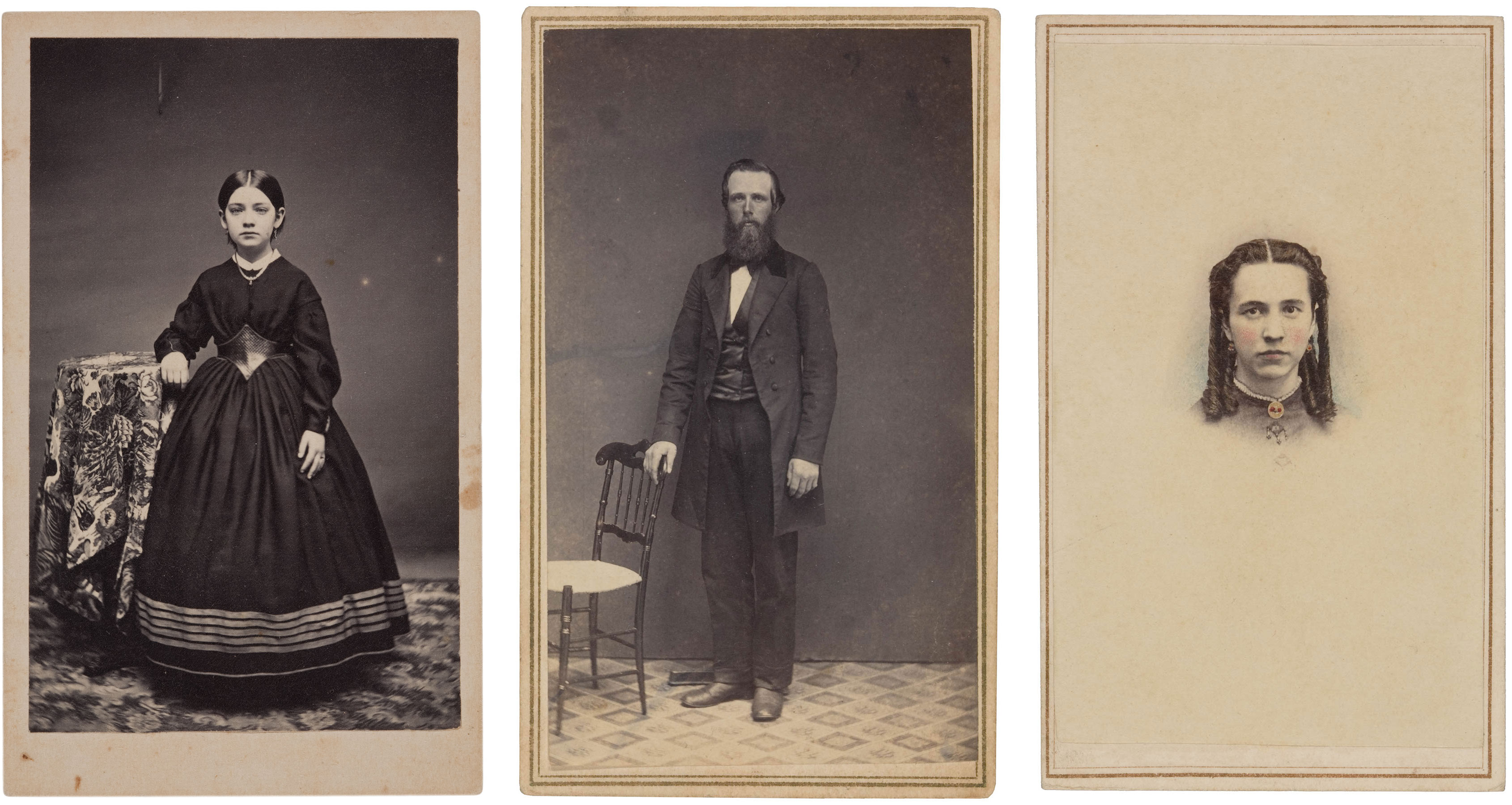
The carte-de-visite became popular in the 1860s. They measure roughly 2 ½ x 4 inches.
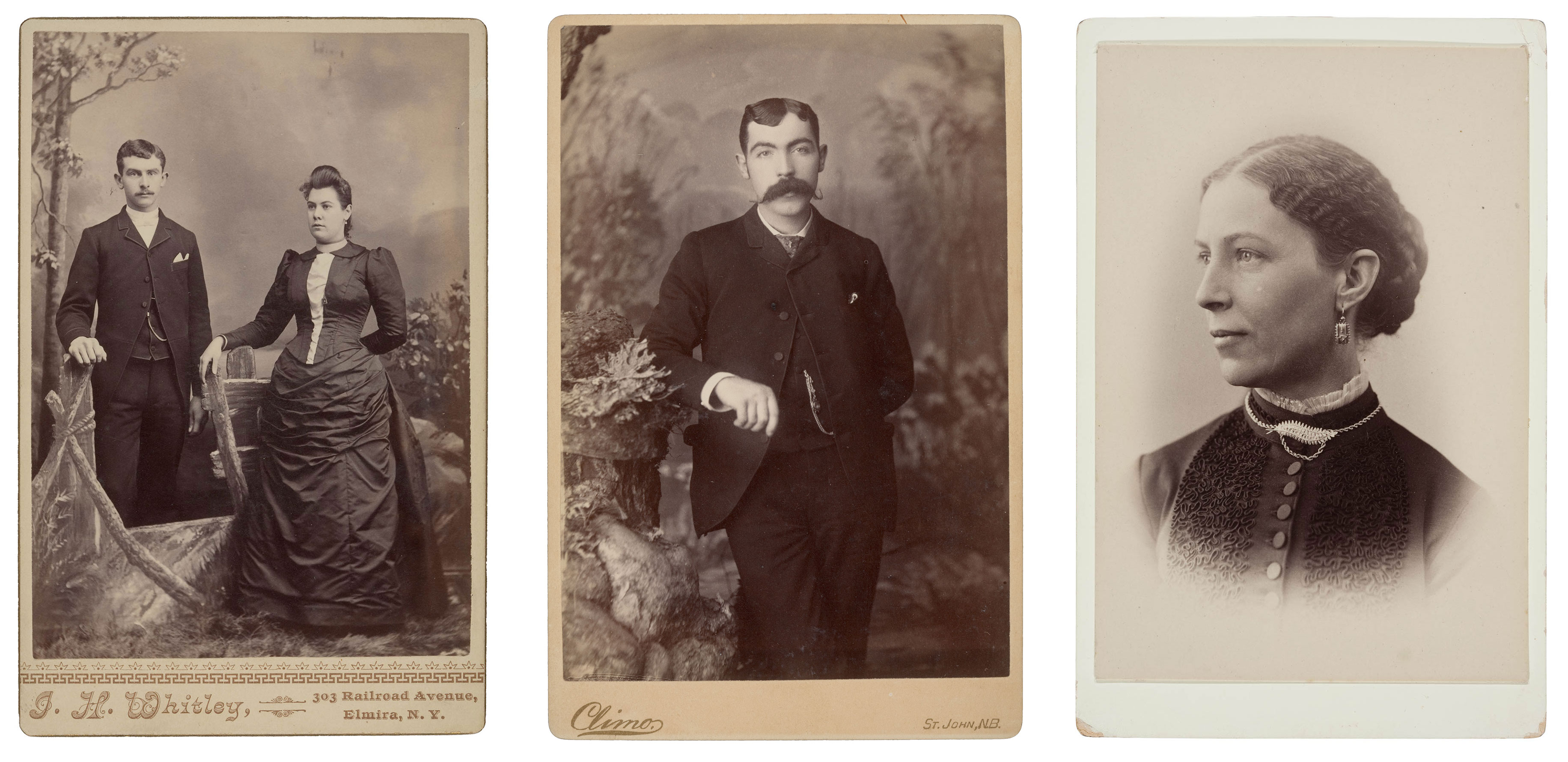
Measuring 4 ¼ x 6 ½ inches, the cabinet card became a popular format in the 1870s.
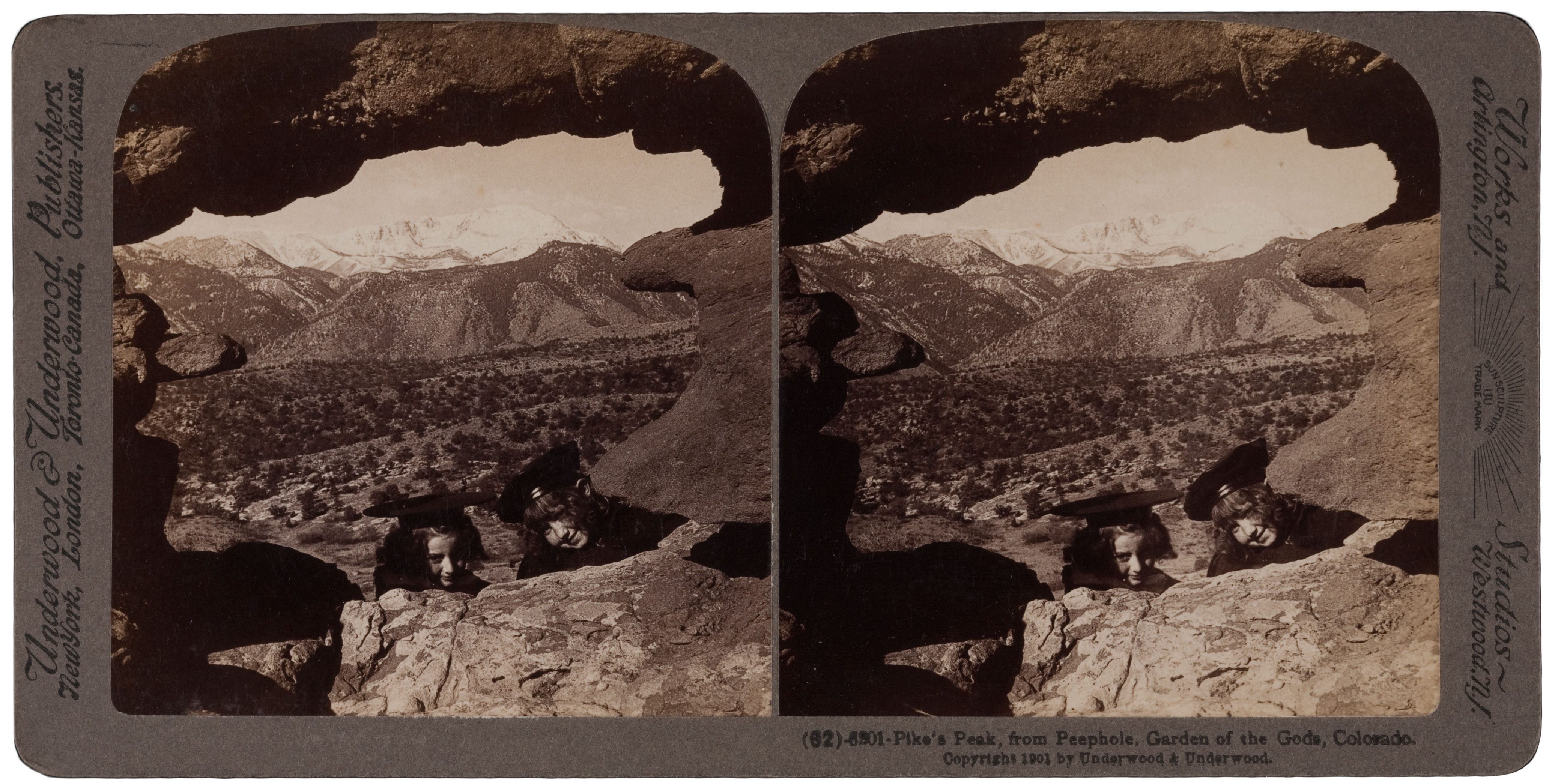
Stereoviews have two images mounted to a rectangular card.
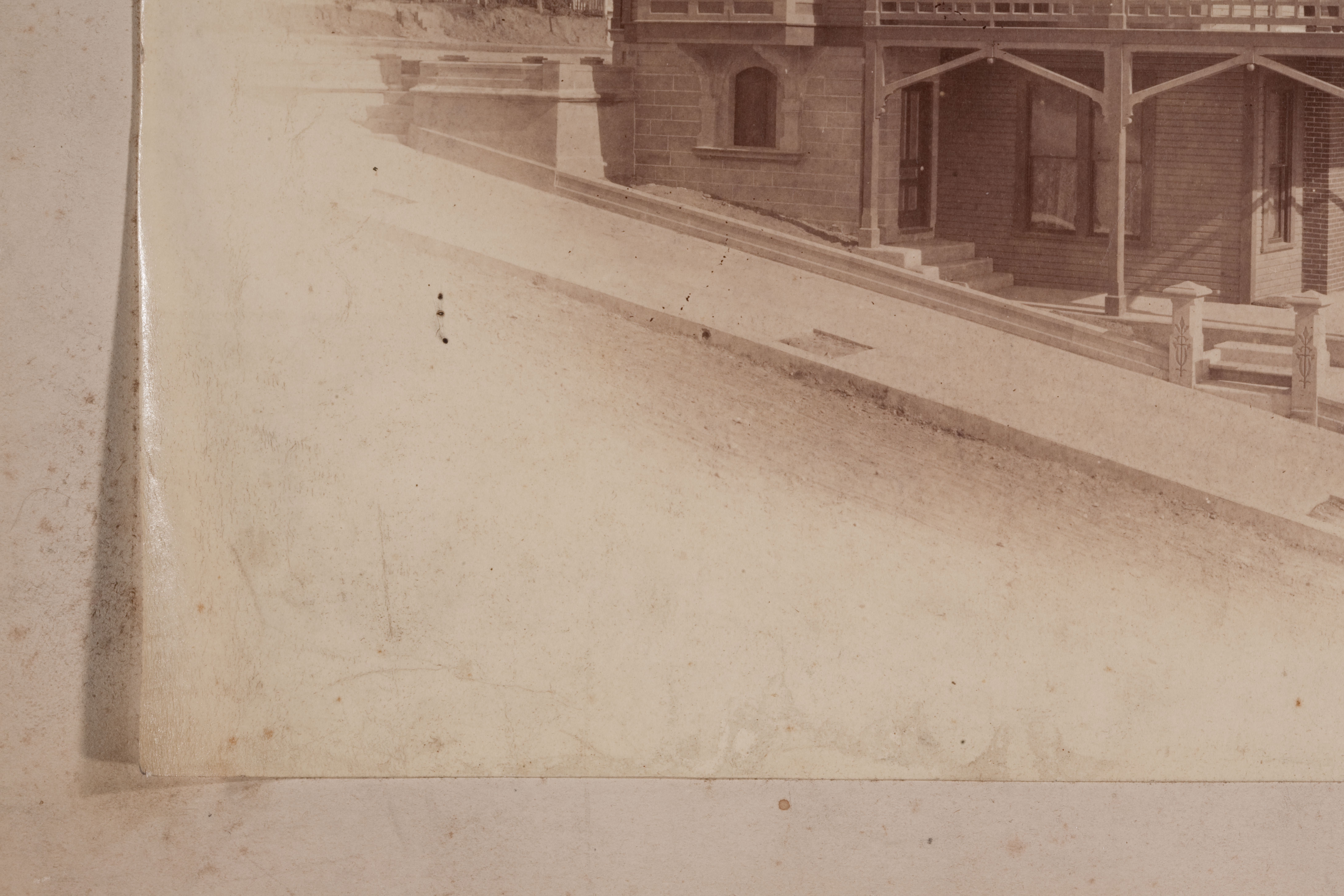
An albumen print mounted to an inferior secondary support. This print has lifted from the mount illustrating the thin paper stock typically used for albumen printing.
Hand coloring: Studio portraits and Japanese-made prints may have hand coloring. Water-soluble pigments and later, aniline dyes, were used in the 1880s and 1890s. Prints were usually coated with gum arabic, isinglass, ox gall or some other coating to act as a wetting agent to allow for better absorption of the colorant. The Japanese used pigment prepared with buckskin glue.
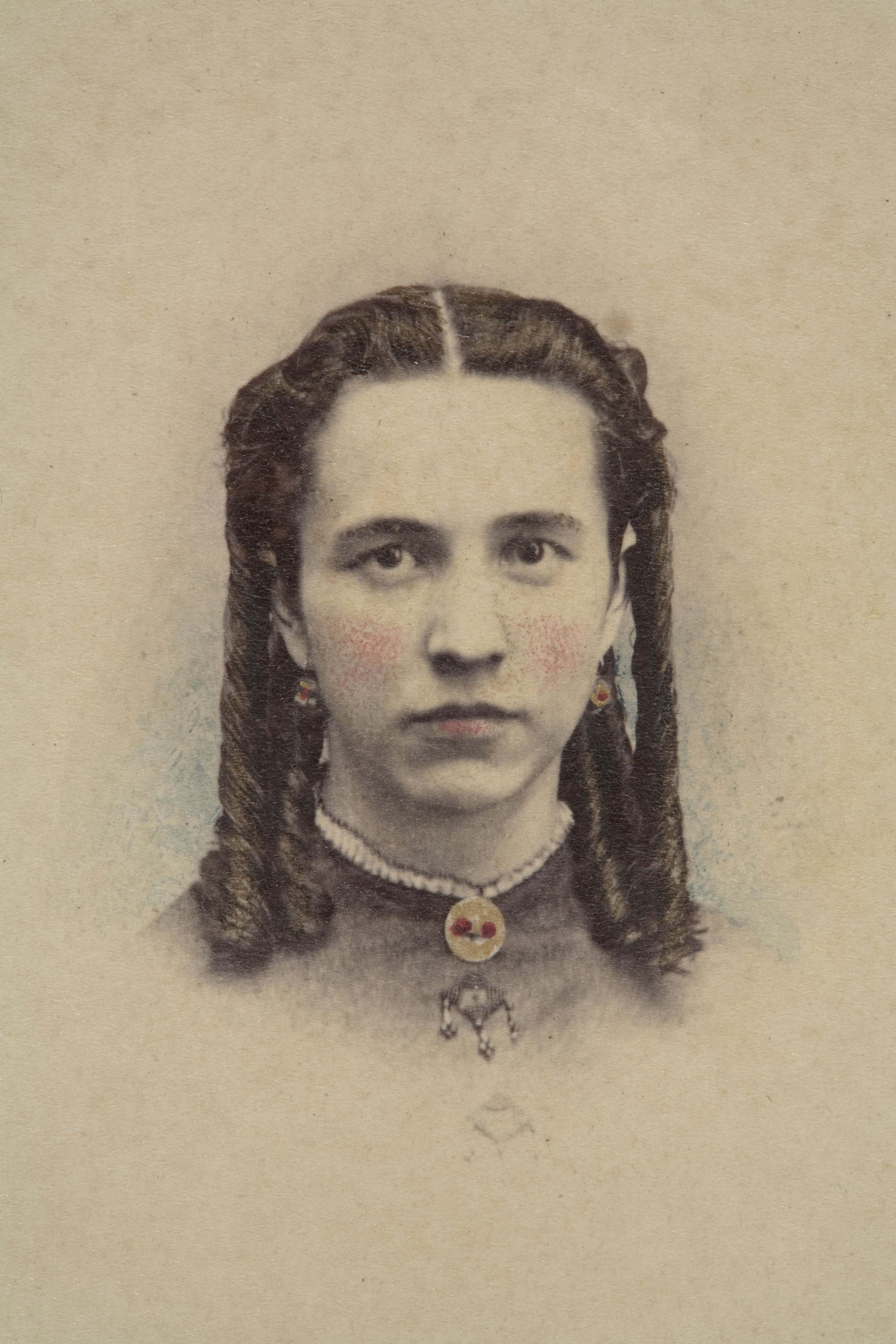
Hand applied color was typically applied to cheeks, lips and jewelry as seen here.
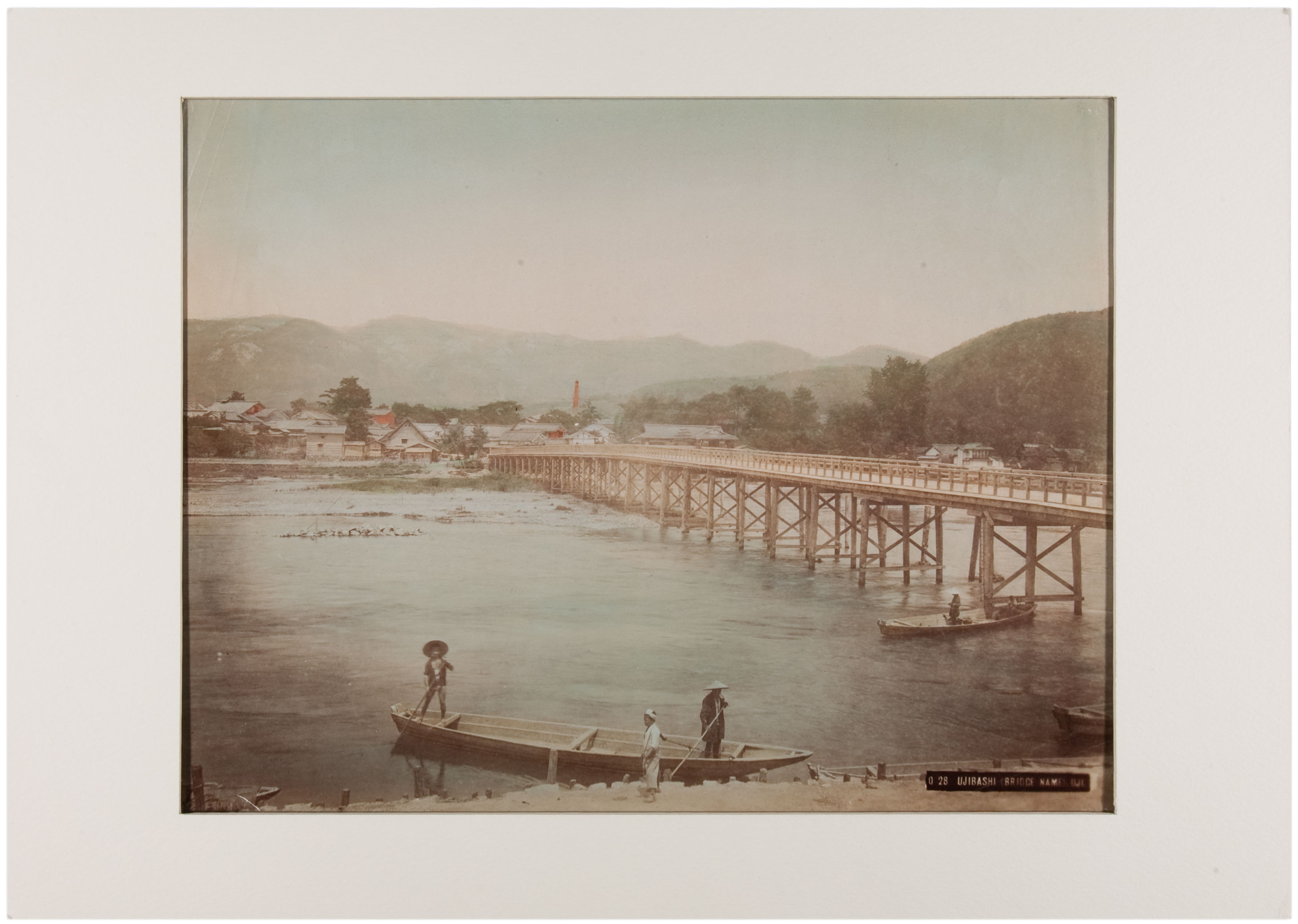
A hand colored Japanese print.
Because albumen prints are nearly always mounted, there is usually information printed or written on the mount.
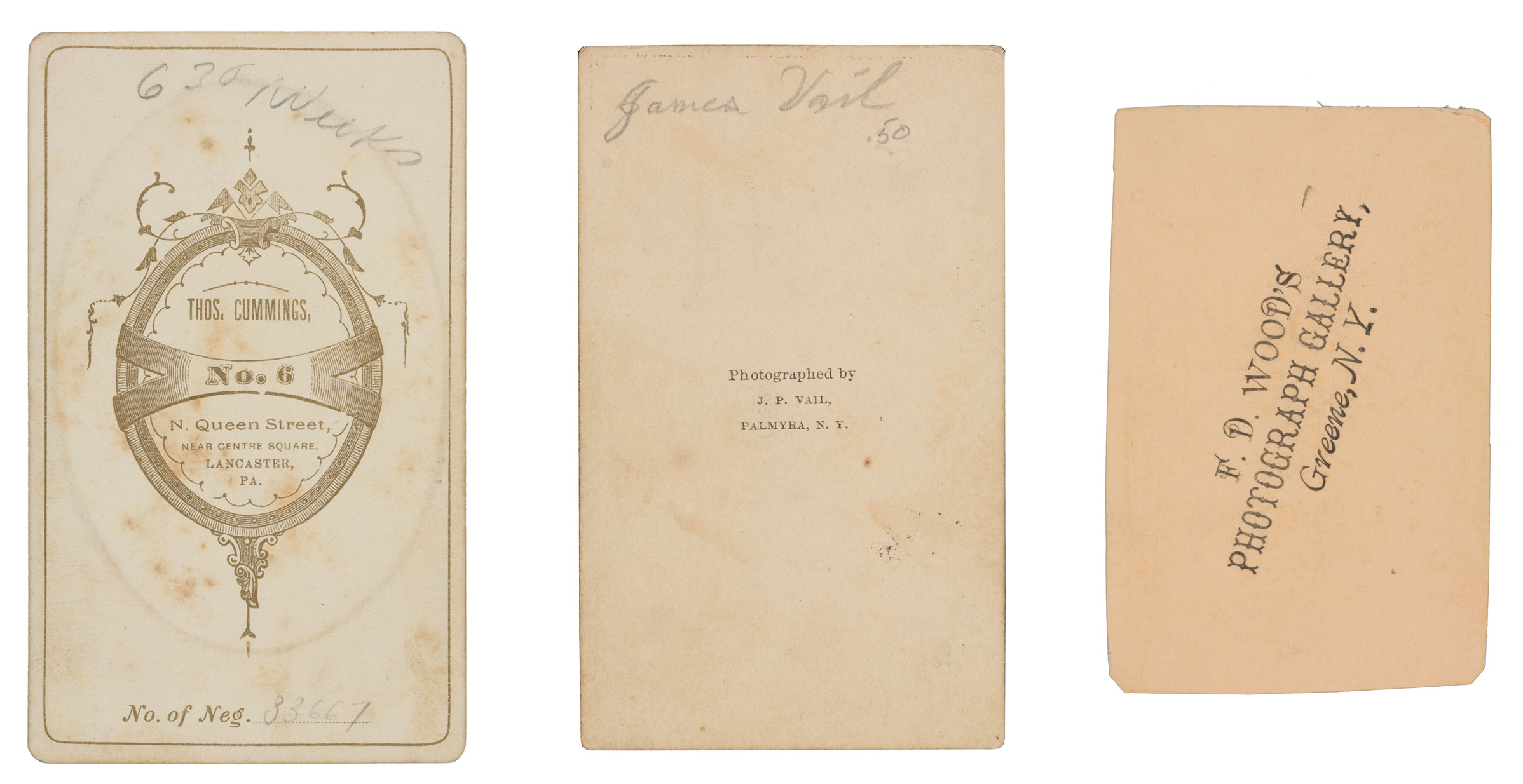
Examples of albumen versos bearing studio logos, locations, and/or handwritten notations.